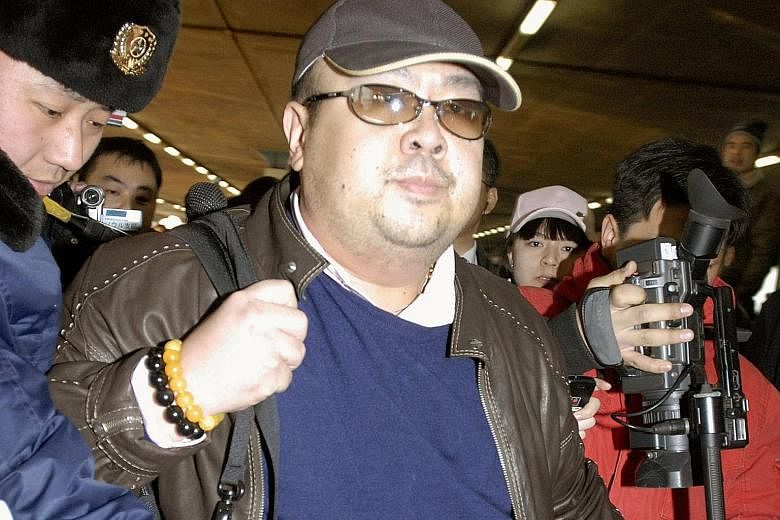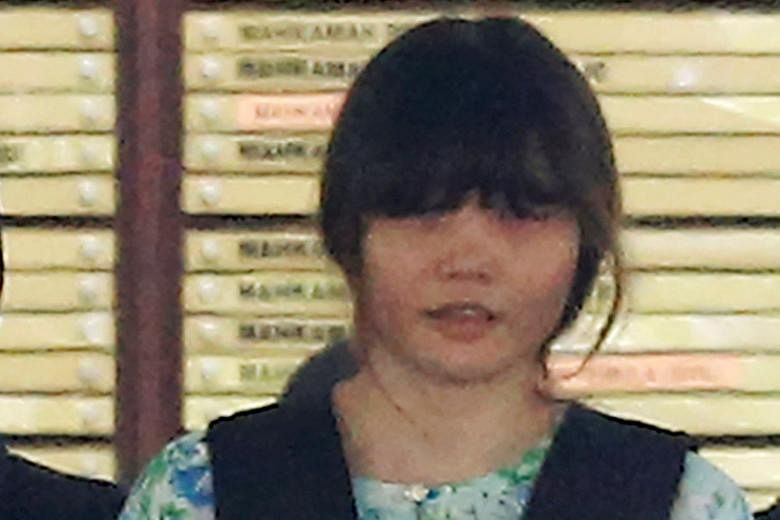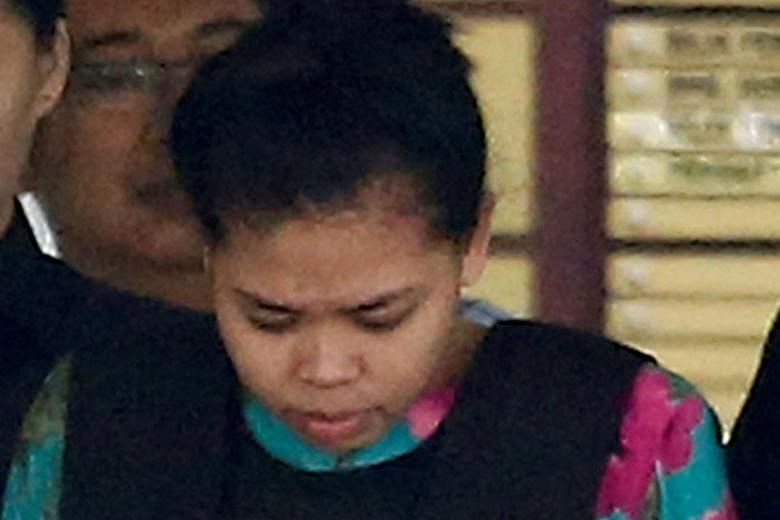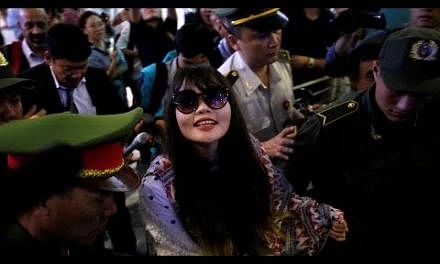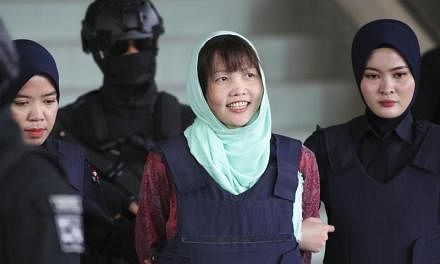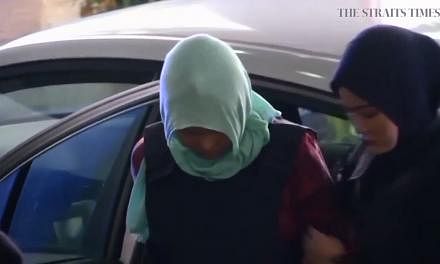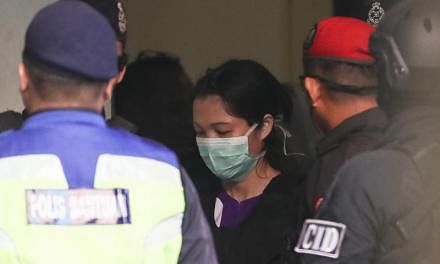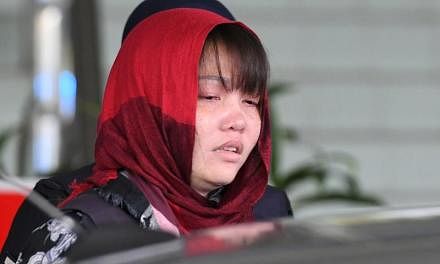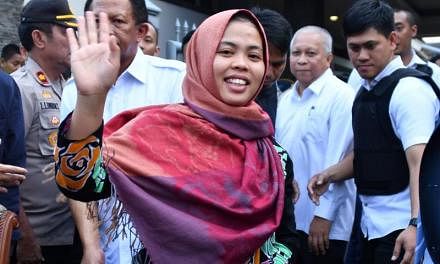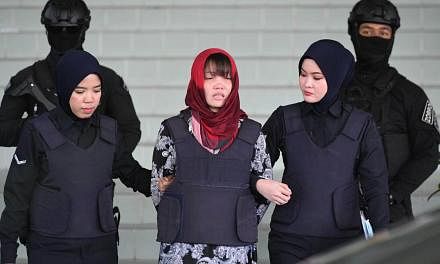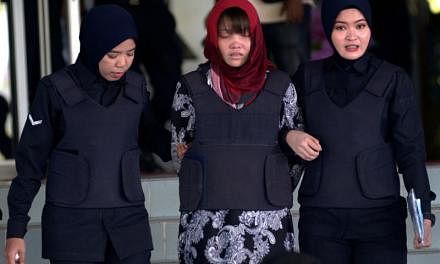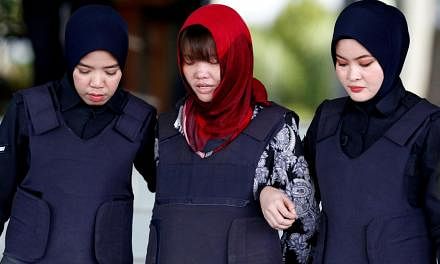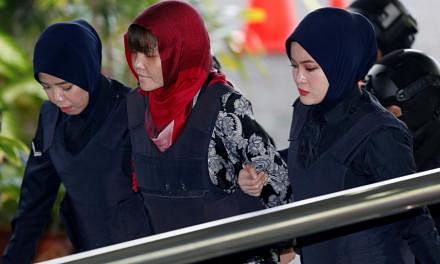The name Kim Jong Nam hogged the headlines as reporters from around the world descended on a small courtroom in Malaysia's Shah Alam last week.
But in one of the many ironies and mysteries surrounding the murder trial that kicked off last Monday, Mr Kim Jong Nam was not listed on the official papers as the murder victim - " Kim Chol" was.
The estranged half-brother of North Korean leader Kim Jong Un was carrying a diplomatic passport in the name of Kim Chol on Feb 13, the day he was allegedly killed by two women at Kuala Lumpur International Airport.
In March, Malaysia's Deputy Prime Minister Ahmad Zahid Hamidi announced that Mr Kim Chol was in fact Mr Kim Jong Nam, after DNA tests were supposedly done using samples obtained from one of his children. In a surprising revelation on Wednesday, however, the court heard that the dead man was not identified by DNA. "DNA tests couldn't be done because there was only one set of DNA and it was from the deceased," Dr Mohd Shah Mahmood, the forensic pathologist who conducted the autopsy, told the court.
Media reports in March had said that in the absence of DNA from his next-of-kin, Mr Kim's elaborate body tattoos and numerous facial moles were used as "secondary evidence" to identify him.
The post-mortem report submitted to court last week described several tattoos - a large one stretching from his chest to the abdomen depicting a man and two fish, an abstract design on his right upper arm extending to his back, and colourful dragons on his upper left arm and back. A photo of Mr Kim published in 2013 showed he had tattoos on his stomach and upper left arm.
Despite these distinctive features, he remains "Kim Chol" in court documents, illustrating the political sensitivities surrounding the incident. Throughout the probe, the North Korean embassy in Malaysia had insisted the dead man was Mr Kim Chol, and that he had died of a heart attack, not poisoning. In court, Dr Mohd Shah confirmed the autopsy was delayed for a day after pressure from the North Korean embassy.
Another nagging question that remains unanswered after four days in court is how the two accused, seemingly average women, would have got their hands on VX, the nerve agent which the authorities concluded had caused Mr Kim's death.
Listed as a chemical weapon under the Chemical Weapons Convention, its presence in the courtroom via tainted clothing, foul-smelling bodily fluids and tissue samples tendered as evidence meant the judge, lawyers and witnesses had to don face masks and gloves.
With VX in the picture, speculation is rife that bigger forces are at play. Mr Kim, who had been living in self-exile in Macau for over a decade, was seen as an alternative choice for North Korea's leadership. Despite expressing no interest in taking power, he was still seen as a threat to his younger half-brother Jong Un. South Korea and the United States have been quick to pin the incident on the North Korean leader.
Lending credence to this theory was the inclusion last week of four unidentified murder suspects on the charge sheet, together with the named women, Indonesian Siti Aisyah and Vietnamese Doan Thi Huong. The prosecution's charge sheet states that the women are "accused of committing murder with four others who are at large".
Defence lawyers argued that the charge is ambiguous because of its failure to name the other four suspects, but were overruled.
In February, days after Mr Kim's death, Malaysian police had named four North Korean men - Ri Ji Hyon, Hong Song Hac, O Joong Gil and Ri Jae Nam - as suspects. The police said the men fled the country within hours of the 9am attack on Mr Kim. However, an Interpol "red notice" for their arrest was issued only on March 16, more than a month later.
These issues have largely overshadowed Siti Aisyah, 25 and Doan, 28, who seemed to be relegated to the status of bystanders as they sat in the chilly courtroom, dressed in demure outfits, dependent on their translators to follow the proceedings, which will run for two months and hear from over 150 witnesses.
The women were arrested by the Malaysian police days after the attack, after being caught on airport CCTV approaching Mr Kim seconds apart and placing their hands over his face. If convicted, they face the death penalty. Both pleaded not guilty on Monday, maintaining that they were duped into playing a prank on Mr Kim by men who paid them US$100 (S$136).
"It's clear that it's a political assassination," Siti Aisyah's attorney Gooi Soon Seng told reporters earlier last week.
Criminal lawyers told The Sunday Times that proof of intent to commit murder is needed for a guilty verdict. "Intention is always a significant part of any case in which one alleges murder," said lawyer Gobind Singh Deo.
The women have no known direct links to Mr Kim and the prosecution has yet to address what the motive for murder is.
"If it's proven to be a prank, and the two didn't know the substance was dangerous, it would be a full acquittal," criminal lawyer Joshua Tay said. An acquittal would mean walking out of court as free women.
But the charge could also be amended to culpable homicide not amounting to murder, which means the accused intended to cause bodily injury that could lead to death. This lesser charge carries a prison term of between 10 and 30 years.
"It applies if the women knew the substance is dangerous. But it depends on their knowledge of the degree of harm the substance would cause," said Mr Tay.
Just how gruesome the effects of VX are was revealed last week as those who attended to Mr Kim in his final hours took the stand. Minutes after he was attacked, Mr Kim, 45, was sweating profusely as he entered the airport clinic accompanied by security. Clutching his head and breathing heavily, he did not respond to the doctor's questions.
He soon collapsed and convulsed. Witnesses testified that VX causes loss of muscle control and that Mr Kim displayed all its symptoms, including drooling, release of mucus from nostrils and defecation.
After atropine, an antidote to VX, and adrenaline were administered, Mr Kim's oxygen level was still low.
"I decided this patient would need intubation," testified Dr Nik Mohd Adzrul Ariff Raja Azlan, referring to a procedure where a tube is inserted into a person's throat via the mouth.
He said that when he pried open Mr Kim's mouth, it was filled with a mixture of blood, saliva and vomit, and he had to perform suction to remove the mixture. Mr Kim was unconscious and by the time he was taken to the nearest hospital, two hours after the attack, he was dead.
Traces of VX were found on the women's clothing, and on Doan's fingernails, the court heard. But it remains to be seen if the women knew that VX, the odourless, colourless, tasteless liquid they wiped on Mr Kim's face, was so deadly.
With other unnamed suspects still at large, the full picture behind the plot to murder Mr Kim may never emerge.
